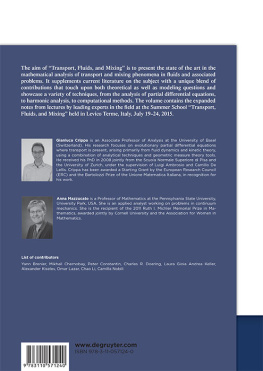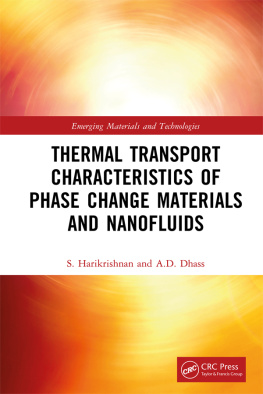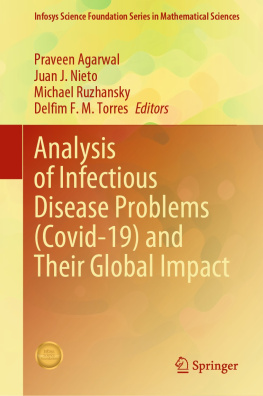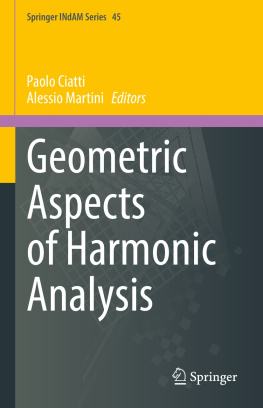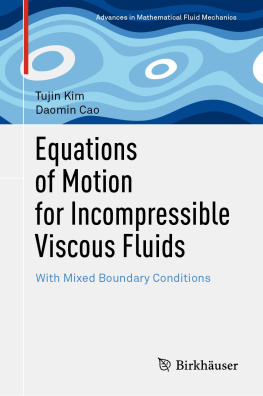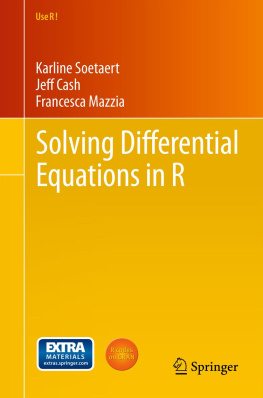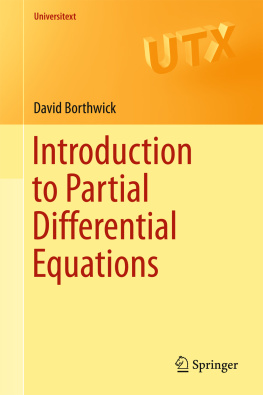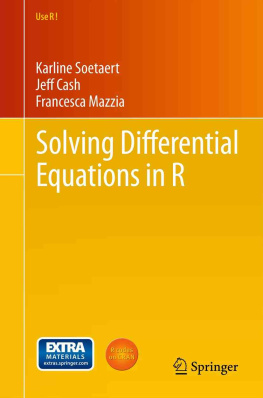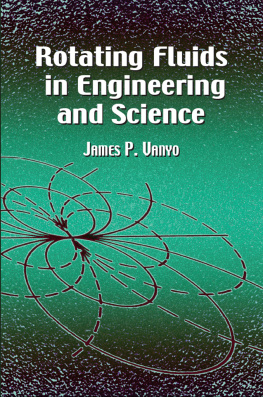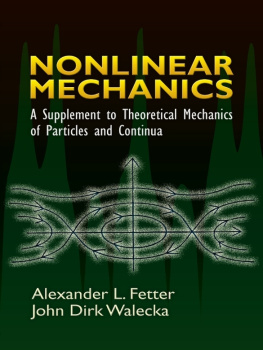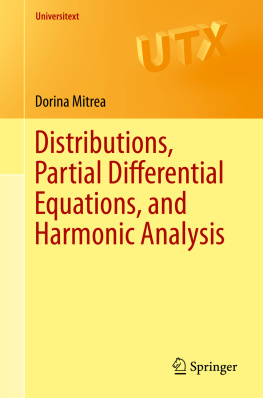Contents

Gianluca Crippa, Anna Mazzucato (Eds.)
Transport, Fluids, and Mixing
ISBN 978-3-11-057124-0
e-ISBN (PDF) 978-3-11-057124-0
e-ISBN (EPUB) 978-3-11-057124-0

This work is licensed under the Creative Commons Attribution-NonCommercial-NoDerivs 3.0 license. For details go to http://creativecommons.org/licenses/by-nc-nd/3.0/.
Library of Congress Cataloging-in-Publication Data
A CIP catalog record for this book has been applied for at the Library of Congress.
2017 Gianluca Crippa, Anna Mazzucato and Chapters Contributors, published by de Gruyter Open
Published by De Gruyter Open Ltd, Warsaw/Berlin
Part of Walter de Gruyter GmbH, Berlin/Boston
The book is published with open access at www.degruyteropen.com.
Cover illustration: samsonovs
Managing Editor: Agnieszka Bednarczyk-Drg
Series Editor: Gianluca Crippa
Language Editor: Adam Tod Leverton
www.degruyteropen.com
Contents
Introduction
This volume contains the lecture notes originating from the Summer School Transport, Fluids, and Mixing held in Levico Terme, Italy, July 1924, 2015, organized by the Editors with the support and cooperation of CIRM - Centro Internazionale per la Ricerca Matematica (International Center for Mathematics Research) and of the FBK -Fondazione Bruno Kessler (Bruno Kessler Foundation).
The main scope of the summer school was to introduce junior researchers, graduate students and postdocs, to the state of the art in the analysis of transport and mixing phenomena in fluids and associated problems. The present volume contains an abridged version of the school short courses, together with introductory material and recent developments. It is aimed at a broad audience of mathematicians working in partial differential equations (PDEs) and applied mathematics with an interests in fluid mechanics and related areas. The volume supplements the current literature with a unique blend of contributions that touch upon both theoretical as well as modeling questions and present a variety of techniques, from the analysis of PDEs, to harmonic analysis, to computational methods. Each chapter in the volume has been written by one of the main lecturers of the Levico summer school with the assistance of a few of the junior participants, postdocs and graduate students.
Recent progress in addressing some of the most outstanding open questions in the mathematical analysis of fluid flows, in particular finite-time blow up for strong solutions and non uniqueness of weak solutions to the Euler and Navier-Stokes equations, and Onsagers Conjecture on energy dissipative solutions to the Euler equations, has been brought about by a sometimes novel, often renewed, interest in combining traditional approaches to solving PDEs, such as energy estimates, with techniques developed in other contexts, as in geometric and harmonic analysis and in probability. An especially poignant example of this cross-fertilization comes from the successes of convex integration . Initially developed in geometric analysis as a way to prove the homotopy or h-principle for differential relations (the reader is referred to the survey article [], which has fundamental implications for a mathematical theory of turbulence.
Transport and diffusion represent complementary, and sometimes competing, phenomena at the core of any modeling of incompressible fluid flows. From a mathematical ], and has lead to significant advances in establishing rigorous bounds on mixing rates of passive scalars advected by incompressible flows.
Quantifying mixing has proven a rich source of problems in a variety of fields. There is a well-established literature on mixing in chaotic dynamics (see e.g. [], utilizing both analytic as well as geometric approaches.
together with concepts of mixing efficiency. A discussion of mixing and transport in the presence of sources and sinks closes the chapter.
Renormalized solutions to transport equations can be viewed in the more general context of generalized flows and measure-valued solutions or Young measures , which can capture the defects produced by oscillations and concentration along weakly convergent approximating sequences in non-linear equations. Starting with the seminal work by DiPerna and Majda []. These solutions are highly non unique, though they have energy that is bounded in time.
, New concepts of solutions in fluid dynamics (Y. Brenier, in collaboration with L. Keller), present new possible ways to define generalized flows and generalized solutions to the Euler equations. Motivated by the hydrostatic limit in the three-dimensional Euler equations, generalized flows are first described, which can be viewed as solutions with a microstructure that allows to restore uniqueness of trajectories and equivalence between Eulerian and Lagrangian formulations in a suitable way. Then, a new approach to generalized solutions is presented that borrows ideas from the theory of probability measures on path space. Lastly, interesting examples are given and a connection is made with the optimal transportation problem and Monge-Ampre equation.
Advection-diffusion equations arise naturally in modeling incompressible fluid flow. For instance, in two space dimensions, the Navier-Stokes equations can be recast as an active transport-diffusion equation for the vorticity. Another, more singular and challenging, equation of this type is the surface quasi-geostrophic equation (SQG), which has been derived in the analysis of rapidly rotating geophysical flows. There are still several open questions regarding the well posedness of SQG and properties of its solutions, though much progress has been achieved recently, again by exploiting an array of different techniques. Indeed, global existence for the viscous critical SQG was obtained independently by Caffarelli and Vasseur [].
]. The dependence in SQG of the advecting velocity on the advected quantity via a singular integral makes the use of harmonic analysis particularly appealing.
Determining finite-time blow-up for strong solutions and regularity of weak solutions for both the Euler and Navier-Stokes equations remains one of the most outstanding open problems in the analysis of PDEs and, arguably, mathematics as a whole. One of the main mechanisms for possible blow-up of strong solutions to the Euler equations in three space dimensions is growth of vorticity (by the celebrated Beale-Kato-Majda criterion [].
].
To conclude, this volume addresses both qualitative and quantitative aspects of mixing and transport in fluid flows from the point of view of mathematical analysis, and brings together leading experts from diverse areas that can benefit from cross fertilization. Transport and mixing are important phenomena in many applied fields, from environmental science, to geophysics and climate modeling. As such, it is expected that the volume will be a useful reference for applied mathematicians working on interdisciplinary problems.
Acknowledgment: The Editors gratefully acknowledge the fundamental contributions of the main summer school lecturers and authors, Yann Brenier, Peter Constantin, Charles Doering, and Alexander Kiselev, and their co-authors Michail Chernobay, Laura Keller, Omar Lazar, Chao Li, and Camilla Nobili, to the success of this lecture notes volume. They also acknowledge the support of CIRM-FBK, the University of Basel, the US National Science Foundation, Penn State University, the A.P.T. Valsugana and the Comune di Levico Terme. Without their support the summer school and this volume would have not been possible. A. Mazzucato was partially supported by the US National Science Foundation grants DMS 1009713, 1009714, and 1312727.

